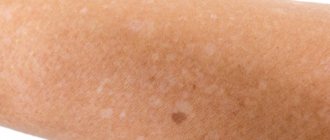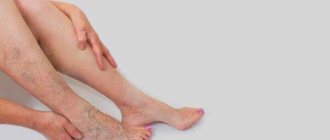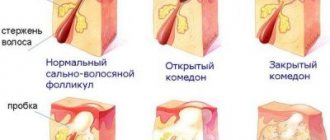Where did the bruise come from for no reason on the skin of an elderly person?
If this is not the first time you notice bruises on an elderly person from your family, you should seriously think about it. Sometimes relatives attribute this to emerging clumsiness, believing that he simply hits objects. And since some people in old age become secretive and try not to attract unnecessary attention, “not to be a burden,” they do not complain about such a problem - they simply remain silent.
In the normal state of the body, a bruise on a person’s skin is formed due to bruises, injuries, very strong pressure or pressing on an area of the skin. At this moment, the capillaries rupture, and the blood that comes out of them gradually becomes bluish, yellowish or purple from the destruction of hemoglobin. Such cases are not a problem: the bruise will gradually disappear on its own; you can also speed up this process with the help of pharmaceuticals. If an elderly person develops a hematoma without injuries or bruises, or simply from touching, this is a reason to visit a doctor.
Causes of bruises
There are several possible reasons for the formation of such bruises in older people:
- Malfunction of the cardiovascular system. In this case, as a rule, hematomas occur against the background of existing diseases, for example, atherosclerosis, coronary artery disease, hypertension. Sudden causeless bruises may indicate that the body's condition is deteriorating.
- Rendu-Osler disease, one of the symptoms of which is a decrease in the elasticity of the walls of blood vessels. They burst easily, which is why hematomas occur.
- Hormonal disorders.
- Blood diseases.
- Oncology.
- Avitaminosis.
- The use of drugs that affect blood clotting.
- Varicose veins
- Insufficient number of platelets in the blood.
Among the relatively harmless reasons is the natural thinning of the fat layer and skin with age. Nature's protection against impacts becomes less effective.
There are some other reasons, such as poor blood clotting, but in this case, the appearance of sudden hematomas is not associated with age and usually follows a person throughout his life. If blue spots appear on the skin of an older person , it is important to find out exactly why.
Scleroderma
You can tell that a person has scleroderma by the characteristic order in which the spots are found. This disease mainly affects the arms and legs of a person. What is scleroderma? Scleroderma is an inflammation of connective tissues in the body, which appears due to disorders in the human immune system. These disorders are in most cases congenital. They can appear mainly at a suitable period for them, for example, after suffering from viral diseases. As a result of strong pressure on the vessels, small vessels cannot withstand and fail. They become brittle, weak and lose their protection. Under fatal stress, they rupture and as a result, red spots form. In no case should you treat scleroderma on your own, but you should immediately visit a dermatologist.
Why is it so important to diagnose the body’s functioning when bruises appear?
The first of the listed reasons is particularly dangerous – disturbances in the functioning of the cardiovascular system. There are many diseases of this type, and some of them may be asymptomatic. There is another situation: an elderly person, seeing that many of his peers are suffering from cardiovascular diseases, believes that pain in the chest is something normal for his age, and is in no hurry to see a doctor.
In fact, all these diseases tend to progress, and many of them, if untreated, lead to death. Blue spots on the skin may indicate that the walls of blood vessels are thinning and losing elasticity. Any pressure surges are reflected by the appearance of hematomas.
At the same time, many older people have deposits in the form of atherosclerotic plaques. They aggravate the situation by a sharp change in the speed of blood flow. There are more gaps. Over time, blood vessels can become thinner not only in the arms or legs. Ultimately, the problem becomes broader: a cerebral stroke or myocardial infarction may occur.
It is from this that it is important to protect an elderly person. Modern medicine opens up wide opportunities for treating cardiovascular diseases or correcting the patient’s condition. This allows you to significantly extend life and improve its quality significantly.
— What causes thrombocytopenia?
— The pathology in any case is caused by an imbalance between the formation of platelets and the rate of their decay. This is a condition when the bone marrow is either not sufficiently formed, or their amount in the circulating blood decreases.
It should be noted that in some cases, insufficient production of platelets in the bone marrow and rapid breakdown in the circulating blood occur simultaneously.
A decrease in platelet products is most often associated with bone marrow damage or metaplasia (degeneration), as well as the development of osteomyelofibrosis, which leads to a decrease in the number of megakaryocytes (giant cells of the bone marrow); Occurs in the following diseases or conditions:
- Aplastic anemia (when the body is unable to produce enough new blood cells);
- Myelodysplasia (a group of diseases in which we encounter malformed, dysfunctional blood cells);
- Leukemia and myeloma diseases;
- Radiation and toxic effects on the hematopoietic system.
Increased destruction of platelets occurs in the so-called thrombocytopenia of consumption (during DIC syndrome) and deposition (during hepatolienal syndrome, portal cirrhosis of the liver, Budd-Chiari syndrome), as well as some cardiovascular anomalies and diseases (aneurysm, defects, stenting).
It should be noted that immune thrombocytopenia occurs most often, when the rapid breakdown of platelets is associated with the destruction of the immune system. This group includes primary immune thrombocytopenia (idiopathic thrombocytopenic purpura), a disease when the immune system, due to the destruction of the immune system, produces antibodies against its own platelets.
The secondary immune form develops when immune complexes are produced during other autoimmune diseases (systemic lupus erythematosus, antiphospholipid syndrome, lymphoproliferative diseases), as well as during non-autoimmune diseases (gestational thrombocytopenia, infectious diseases, viral infections, including the chronic type) .
Contributing factors:
- Infections (especially viral);
- Pregnancy;
- Surgical intervention;
- Strong physical activity;
- Vaccination.
How to treat bruises in older people
Since the causes of hematomas can be different, conventional treatment does not make much sense. With standard manipulations, hemorrhages under the skin in older people will still occur. First you need to determine the cause, and the doctor will prescribe treatment. It may, among other things, include a special diet.
During examinations and diagnosis, it is recommended to minimize the likelihood of bumps and falls. If a person has already been to a doctor about vascular or heart disease, it is important to strictly follow his recommendations. In any case, this does not replace treatment.
Treatment
Modern treatment for the appearance of blue spots and formations of the lower extremities is complex. It involves the use of conservative therapy or surgical intervention, the choice of which is made after the causes of the pathological process have been diagnosed. Conservative therapy includes the use of various medications that improve the functional state of hemostasis, as well as the strength of the walls of venous vessels and microcirculatory structures. Surgical treatment is carried out to remove vessels with irreversible changes in their walls.
If blue spots appear systematically for no apparent reason, you should consult a phlebologist (a medical specialist who deals with the problems of vein diseases), who will prescribe additional research and appropriate treatment.
Psoriasis
If red spots appear on the body
With psoriasis, white formations can be found on previously appeared red spots. The spots first begin to affect the arms and legs, and over time can move throughout the body; severe itching is felt. It should be remembered that you cannot scratch these spots, as you can further aggravate the situation by spreading the infection throughout the body. Unfortunately, psoriasis cannot be treated; you can only stop its spread.
Formations are dry and flaky
Such spots often occur in pregnant women, so there is no need to worry. This is completely normal and will go away on its own after you give birth.
If you are an elderly person and observe dark spots on your legs, then this is also not at all dangerous. Perhaps there was a slight hypothermia. Or a fungus. It's not difficult to cure.
Causes of formations on the feet
If dark spots appear on your feet, do not panic, as the cause may simply be flat feet. Of course, it’s not the most pleasant thing that can happen, but if you have it, most likely you know about it, and it won’t be news. You just crushed your feet and got bruises. The best solution in this situation would be the correct insoles.
To prevent dead skin with bruises from becoming warts and causing even more discomfort, they must be removed in the hospital. Then the spots will disappear.
You can get rid of it using folk remedies
If you do not want to use medications, then you can use traditional medicine.
You can make several foot masks:
- Cucumber mask. Grind the cucumber and apply the paste to problem areas, wait 30 minutes.
- Yeast mask. Take 20 grams of yeast and mix with 20 grams of lemon and grapefruit juice. The mask must be kept on your feet for 15 minutes.
- A mask of their parsley juice. A very useful and effective mask. Chop the parsley and apply the paste to your feet; you can mix it with milk, lemon or honey. Keep for up to 30 minutes.
- Lemon mask. Perfectly whitens your skin. Squeeze lemon juice into water in a ratio of 1 tbsp. l. for 1 liter of water. Keep for up to 15 minutes. Then wash off with milk.
- Curdled milk. If you make yourself lotions from yogurt, it will help whiten your skin. You can add vinegar to enhance the effect.
- Currant berry mask. Grind the berries and apply to the skin. Keep for about 30 minutes
- Milk lotion with vodka helps very well with pigmentation. Mix 30 ml of milk and 10 ml of vodka and wipe the stains.
Proper drug treatment
If you are sure that you do not have serious diseases, and the spots are just pigmentation, then you can begin drug treatment.
The causes of pigmentation may be:
- Sun rays;
- puberty and hormonal imbalance;
- liver or thyroid disease;
- stress and nervous disorders.
The main reasons are covered, but there are others that also need to be considered:
- possible lack of vitamins;
- poor blood circulation in the legs;
- sweaty feet;
- mechanical damage;
- vasculitis, lichen.
Your doctor will tell you how to remove stains without harming your body, but there are several additional non-drug methods:
- laser removal;
- peeling of different levels: superficial, medium and deep;
- creams and lotions containing hydroquinone and kojic acid;
- You can also use Arbutin, it eliminates skin defects.











